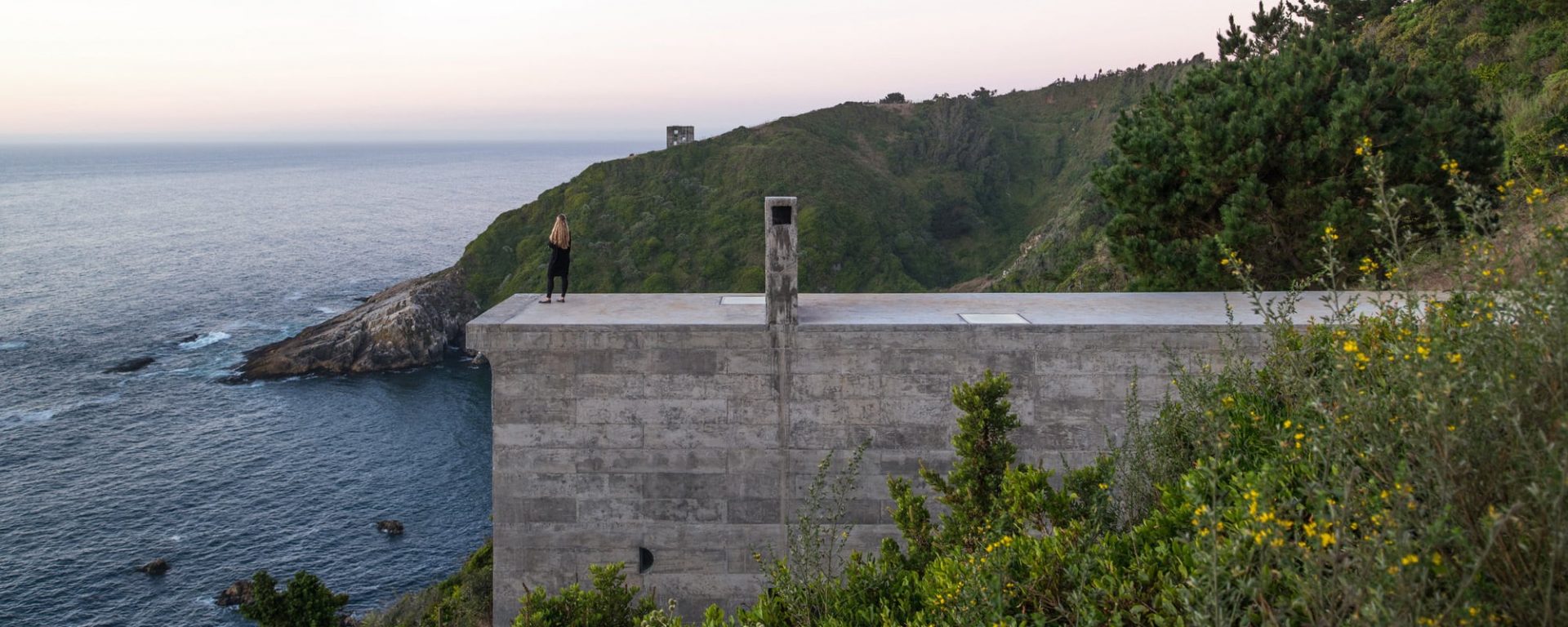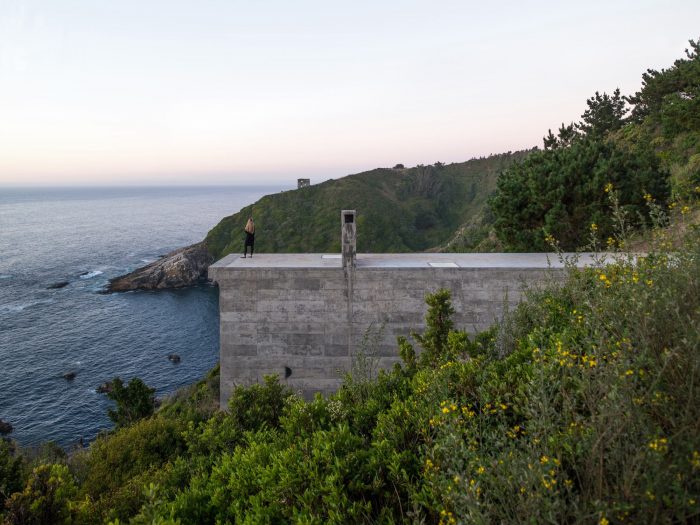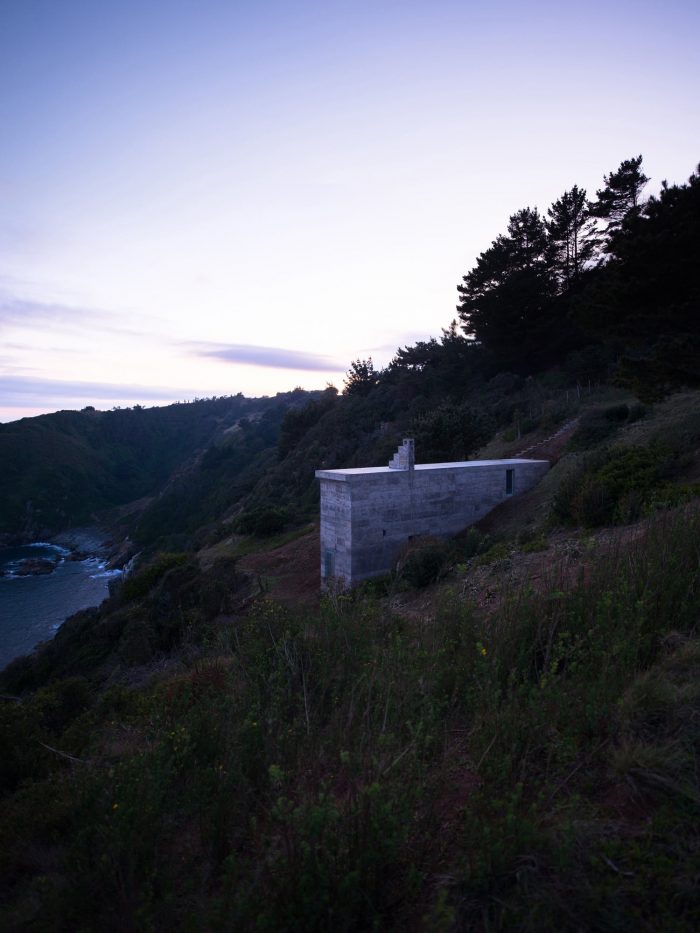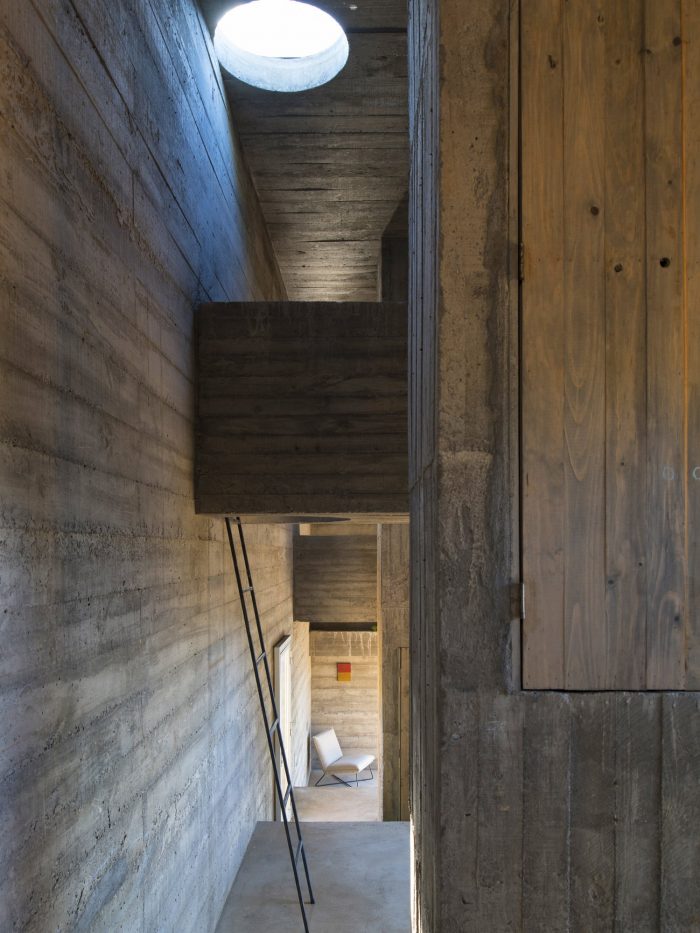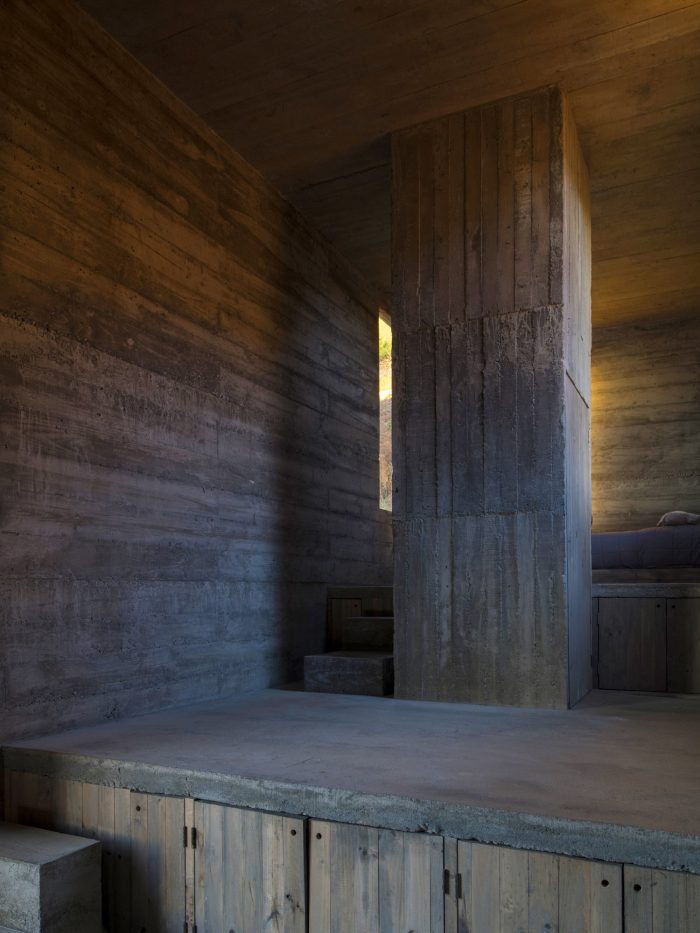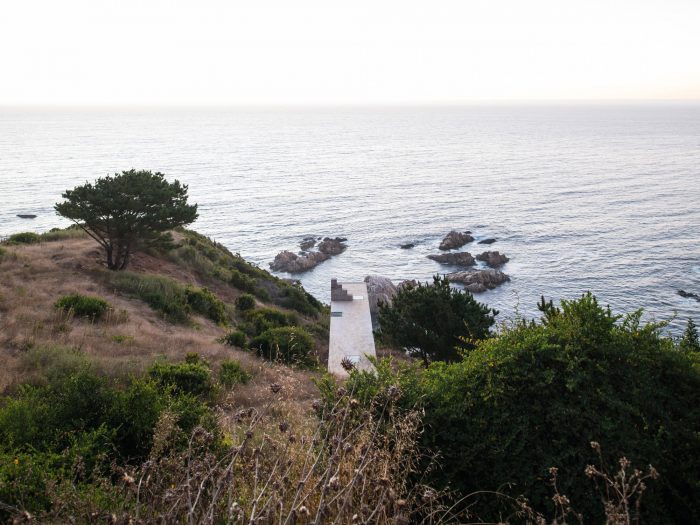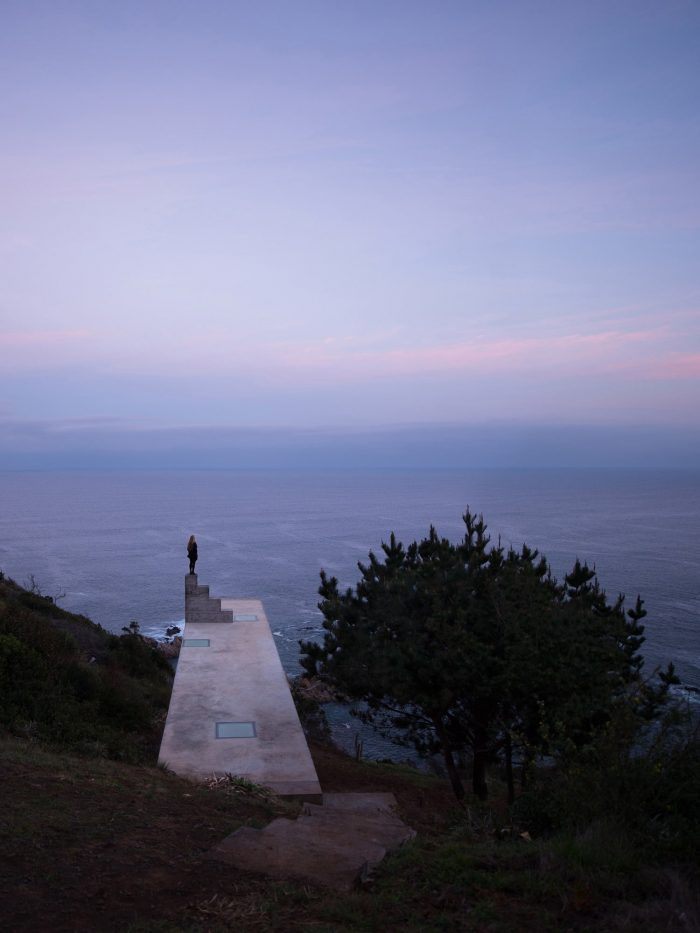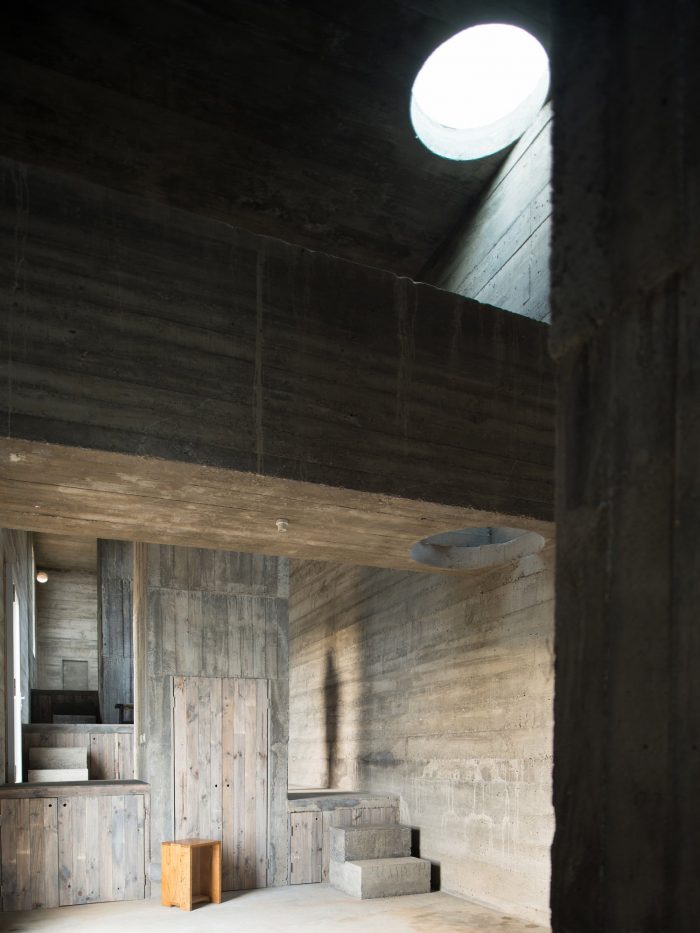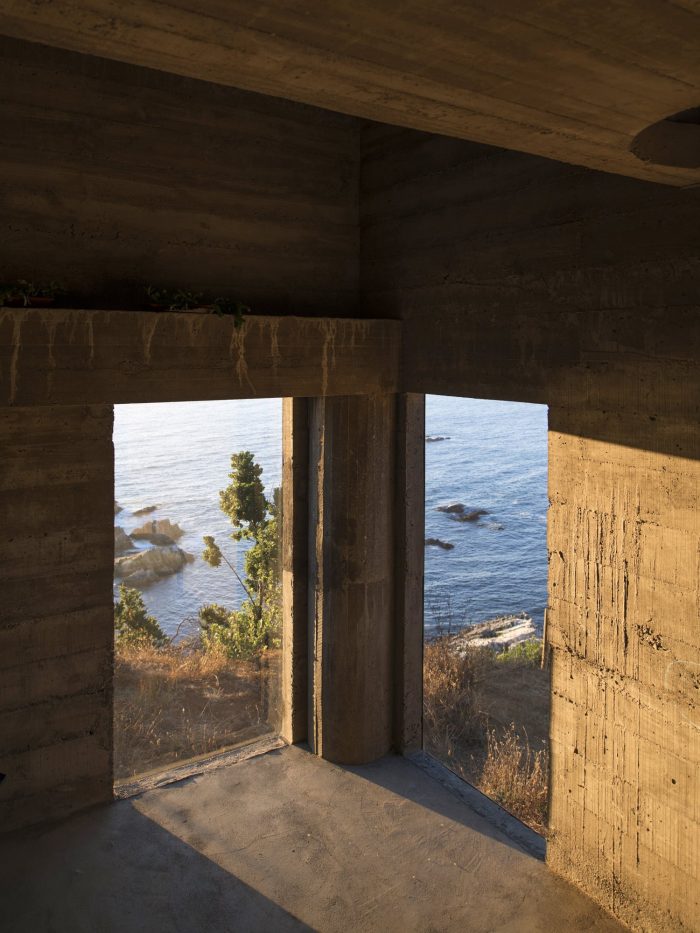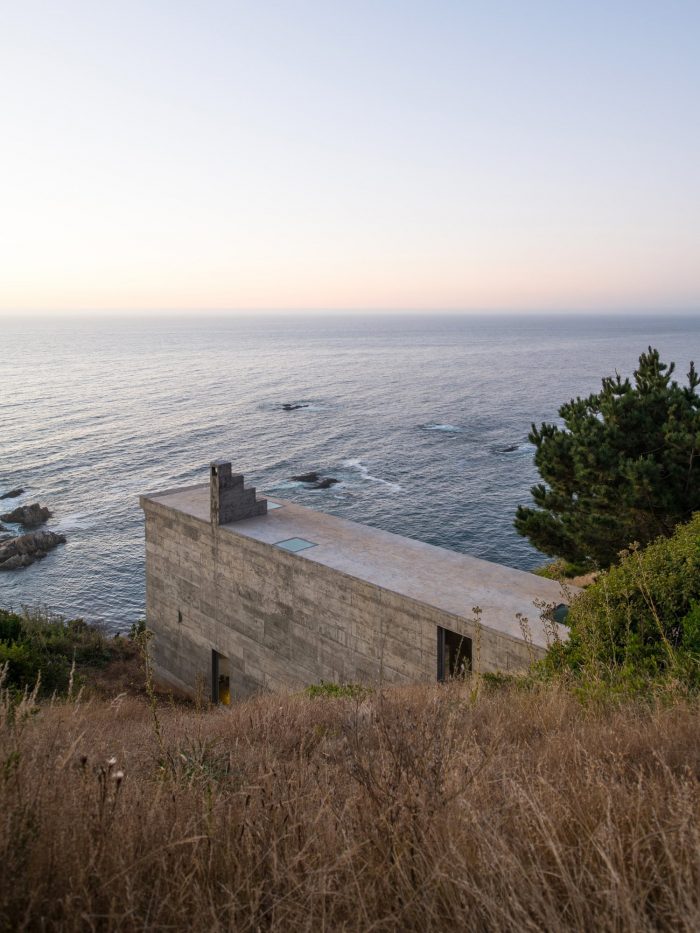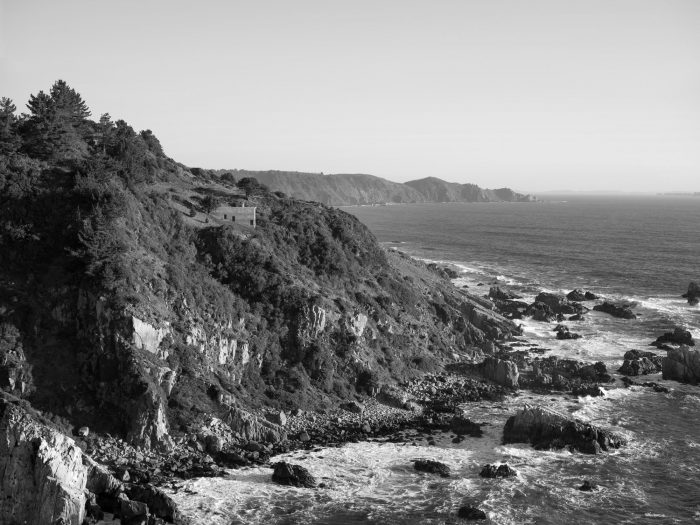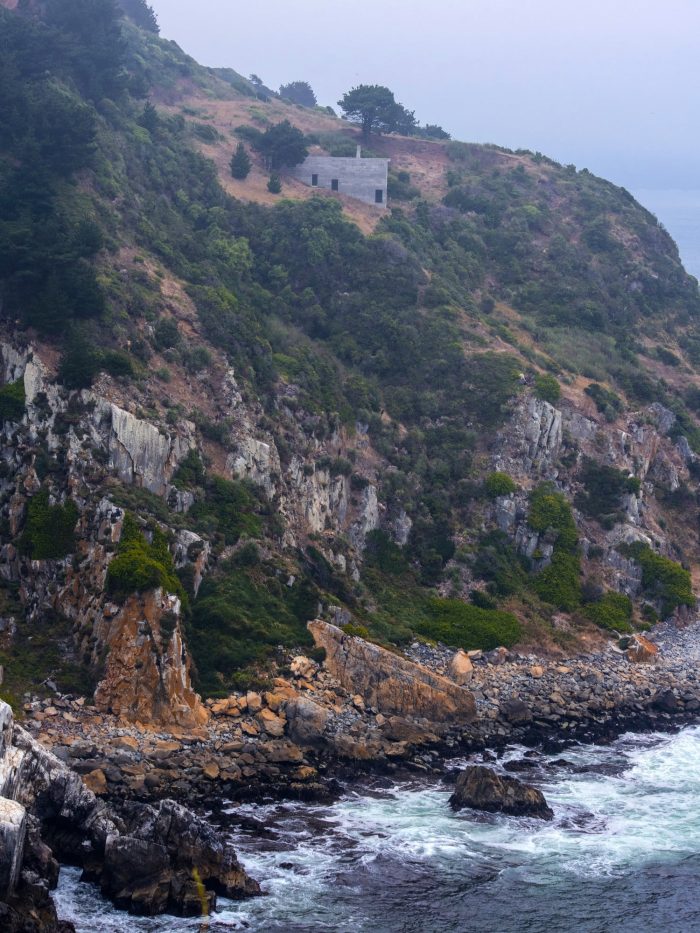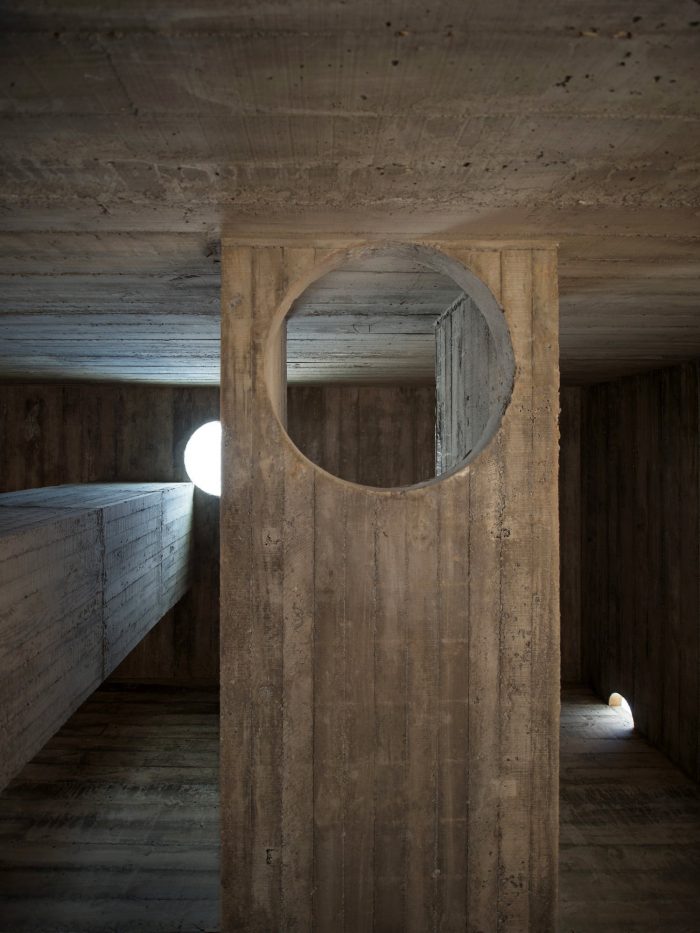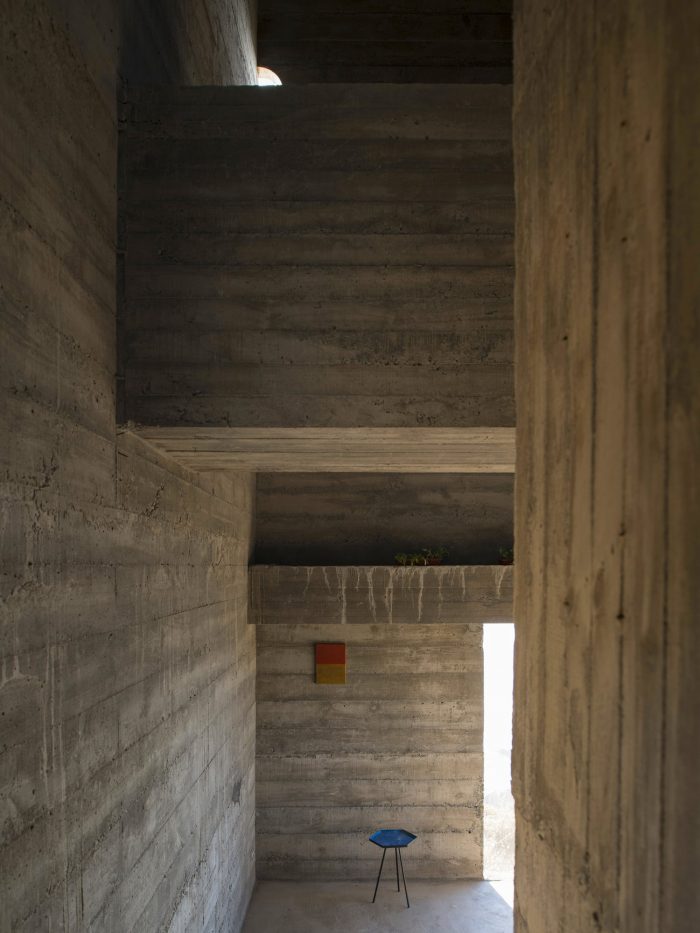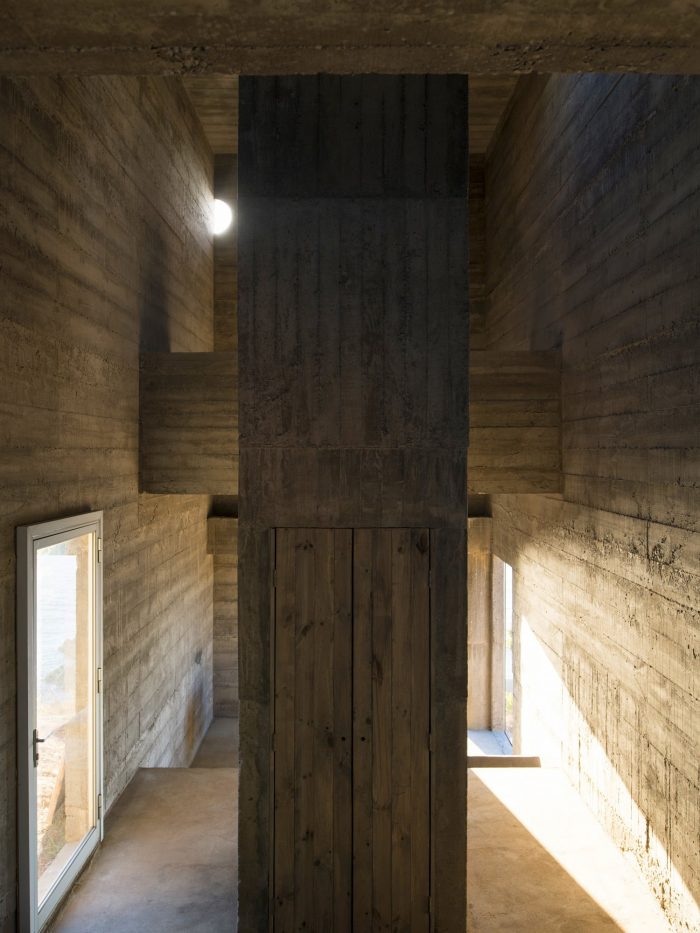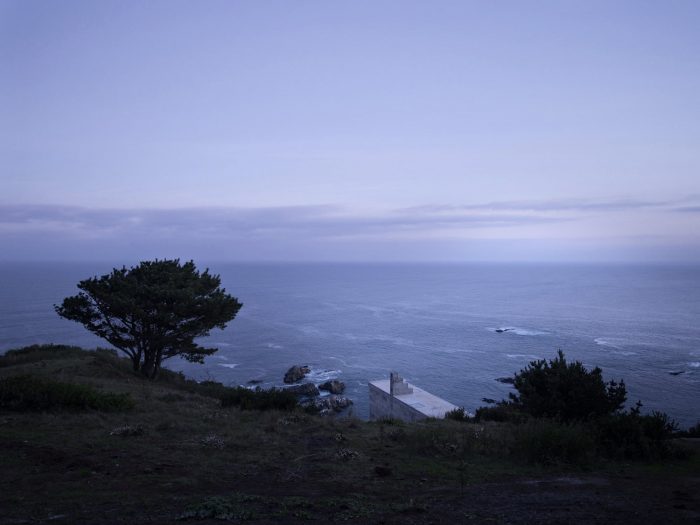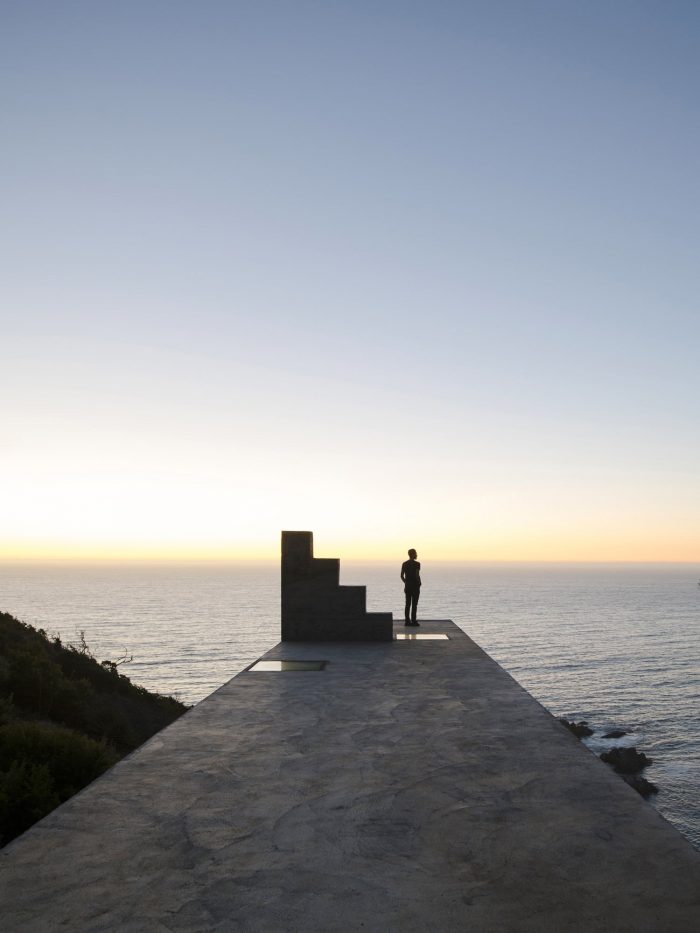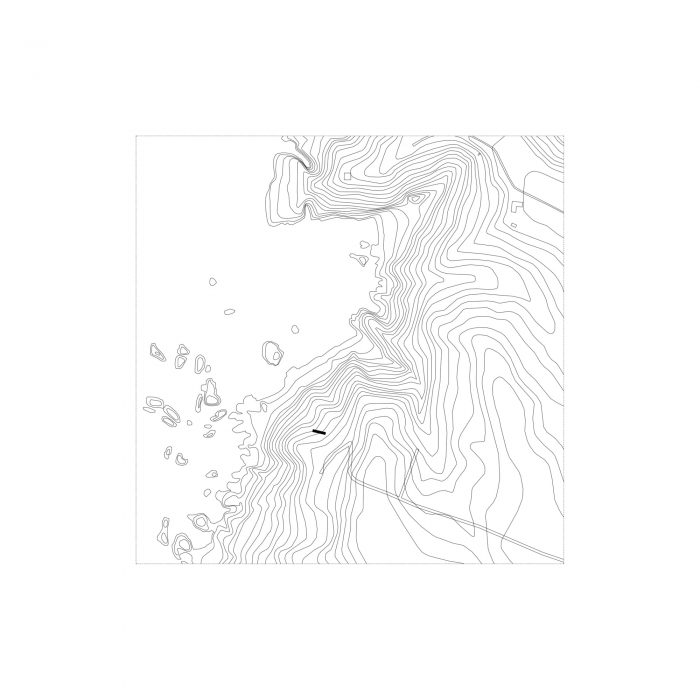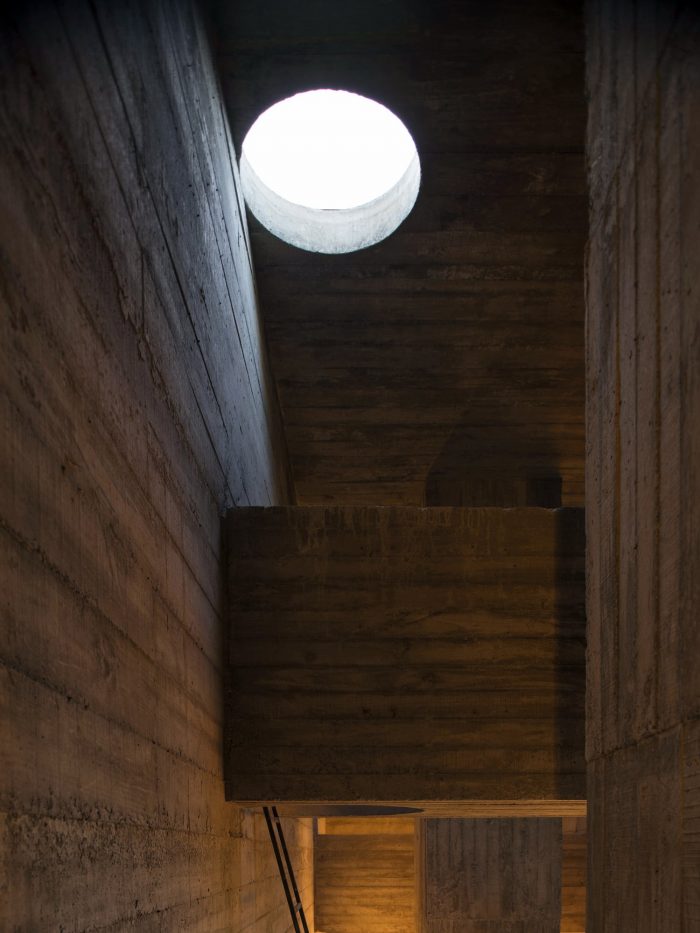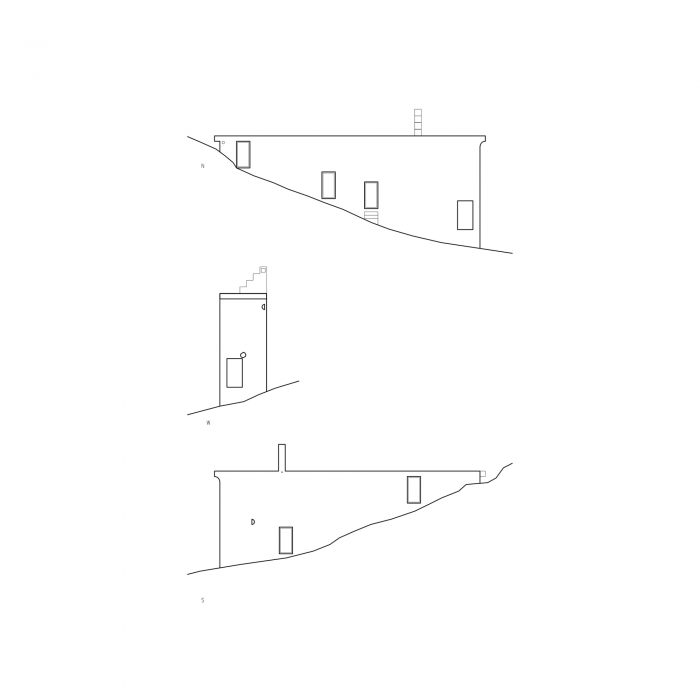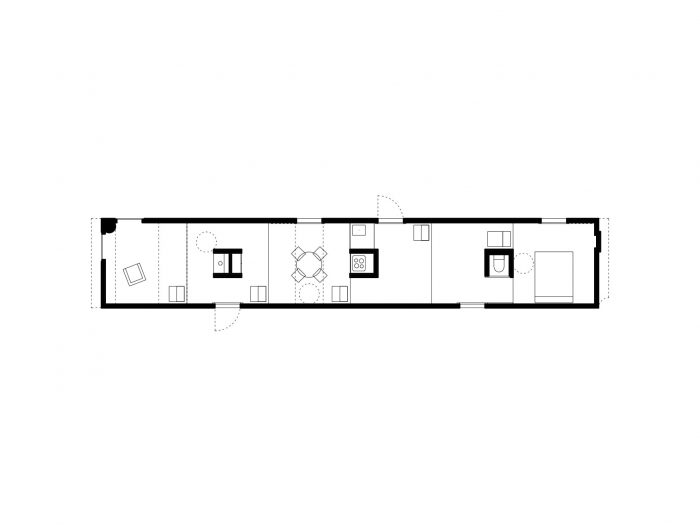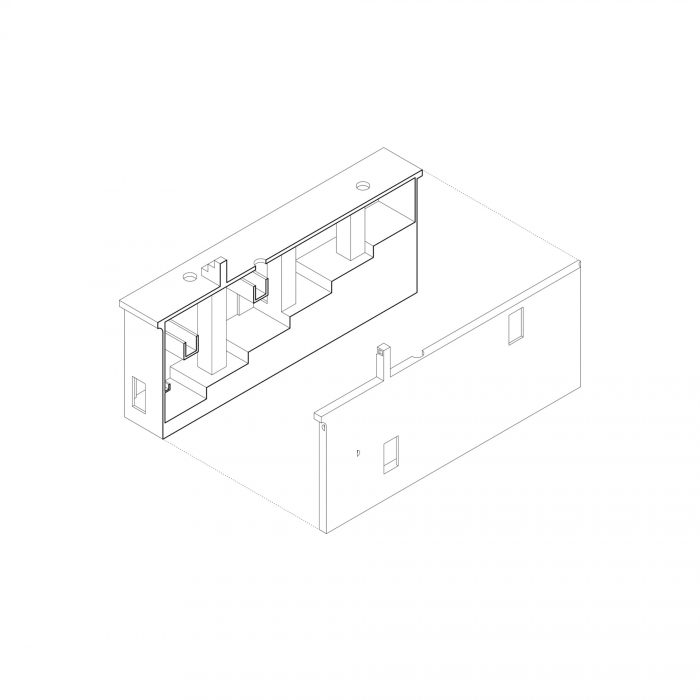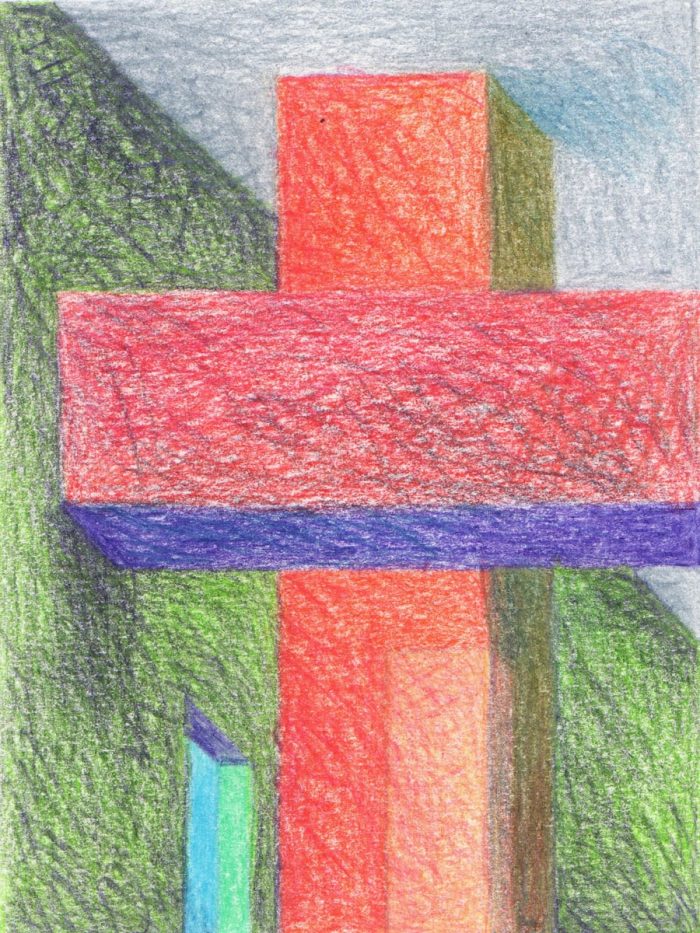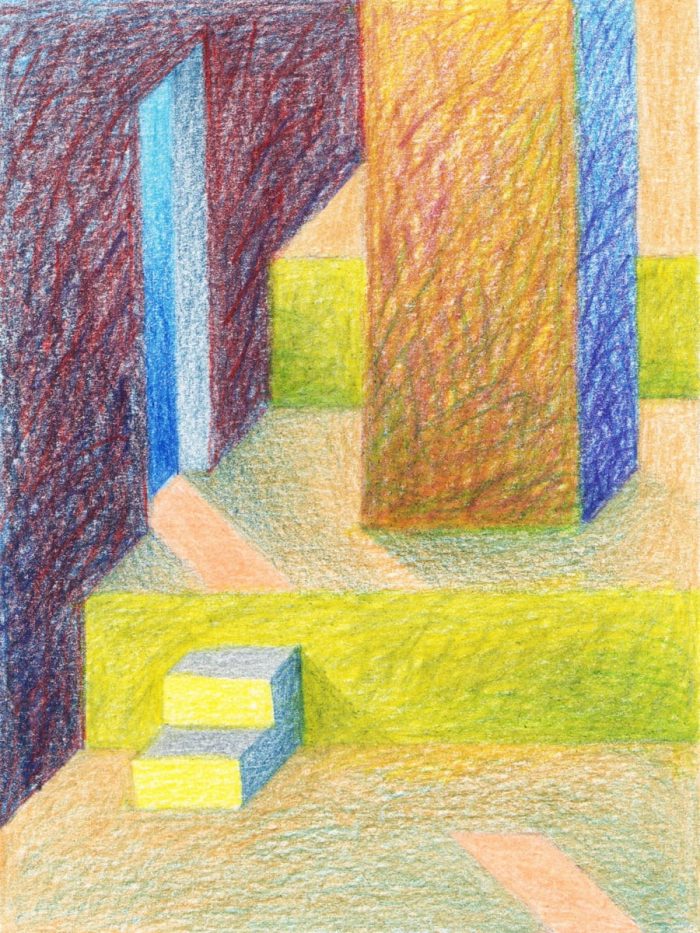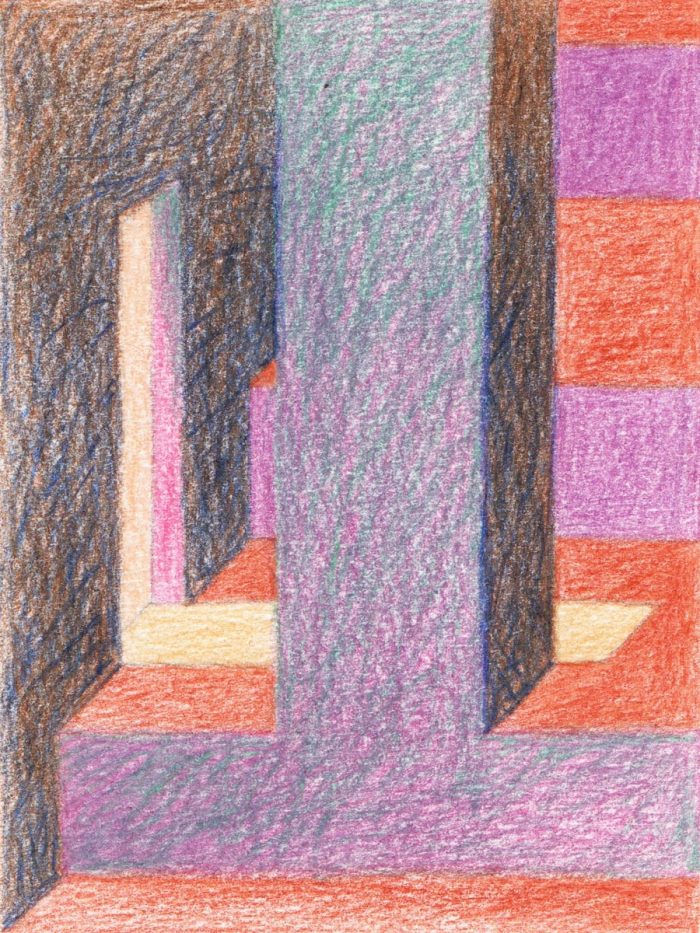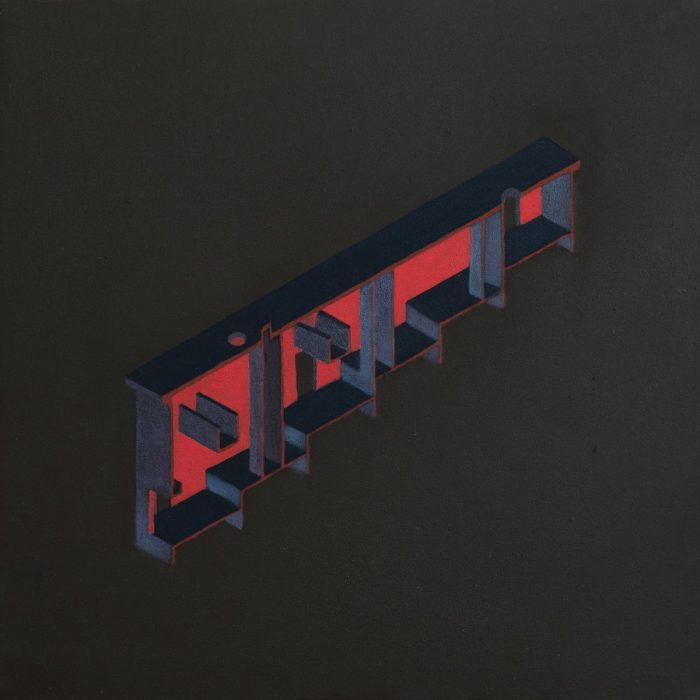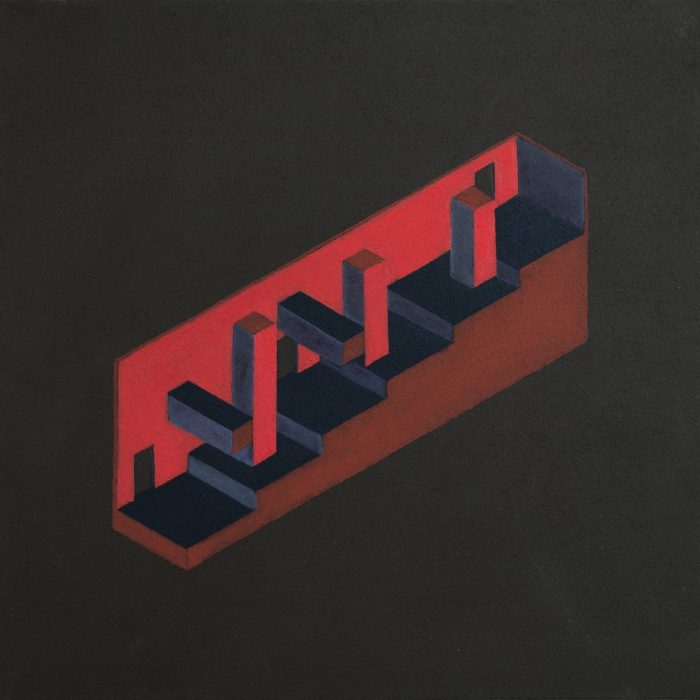也许物体和事物之间的唯一区别就在于它们的规模。在其模糊的尺度中,这个小建筑更接近于任何自然事物,它比小屋更多,但比房子少:它是一个小屋。作为一个不透明的块状物,一个沉重地固定在悬崖边上的整体物体,它正对着太平洋上的海狮保护区。
Perhaps the only distinction between objects and things resides in their scale. Closer to any natural thing, in its ambiguous scale, this small building is more than a hut but less than a house: it is a cottage. As an opaque block, a monolithic object heavily anchored at the edge of a cliff, it is facing a sea-lion reserve on the Pacific Ocean.
在其尺寸不足的厚度中,在其狭窄和高大的比例中,该建筑可以被解读为一堵与自然地形垂直的人居墙。这堵墙的高度由两条线决定:一个连续的地平线和一个由六个平台组成的阶梯式序列,向海面下降。
In its under dimensioned thickness, in its narrow and tall proportion, the building could be read as an inhabited wall that runs perpendicular to the natural topography. The height of this wall is determined by two lines: a continuous horizon and a stepped sequence of six platforms that descend towards the sea.
该水平屋顶(具有开放平台的功能)和地面的规则延伸(具有休息、用餐和生活的非正式安排)之间的分隔,是一个单一的不对称的房间,被三个巨大的柱子和两座桥打断。当床被放置在天花板较低的上层平台时,沙发或桌子被放置在下层平台,在一个垂直空间内。
The separation between that horizontal roof (with the function of an open terrace) and the regular extension of the ground (with the informal arrangement of rest, dinning and living), a single asymmetrical room, is interrupted by three massive columns and two bridges. While beds are placed in the upper platforms, with low ceiling, sofas or tables are meant to be in the lower platforms, within a vertical space.
在长形体的两侧有一个谨慎的开口制度,有一些准时的天窗,一些可以用作太阳钟的半月形穿孔,以及一个被圆柱分割的独特的角窗。这是唯一一扇有无框玻璃的窗户,与外部混凝土表面平齐。镜子里的夕阳,一个几乎不可能的、虚幻的浮动岩石就在这个反射的上面。
There is a discreet regime of openings at either sides of the long volume with some punctual skylights, a few half-moon perforations that could be used as sun clocks and a singular corner window divided by a round pillar. This is the only window with unframed glass flushed to the outer concrete surface. Mirroring the sunset, an almost impossible and illusory floating rock rests right on top of that reflection.
Architects: Pezo von Ellrichshausen
Area : 70 m²
Year : 2017
Photographs :Pezo von Ellrichshausen
Construction : Carvajal & Cabrer
Structure : Peter Dechent
Installations : Marcelo Valenzuela, Daniel Garrido
Author Architects : Mauricio Pezo, Sofía von Ellrichshausen
Collaborators : Diego Pérez, Thomas Sommerauer, Teresa Freire, Beatrice Pedroti, Wiktor Gago
City : Tome
Country : Chile

